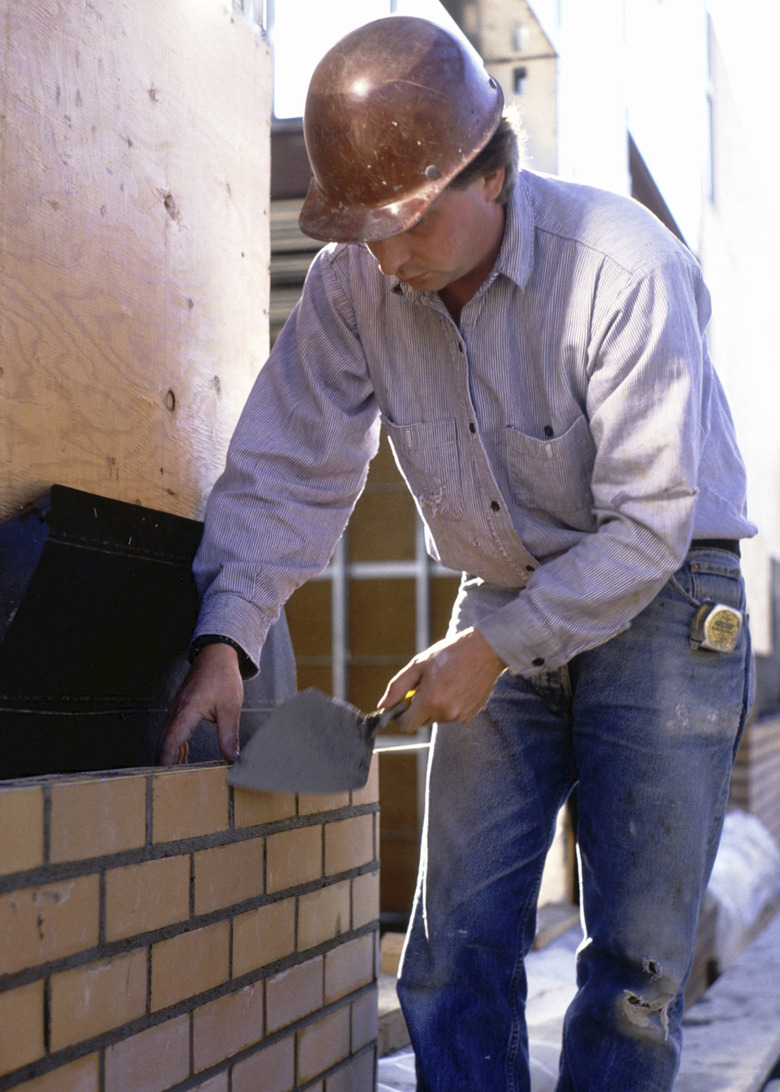How Thick To Make Mortar Between Bricks
Brick is used for many different purposes in addition to building homes. It can be used for edging garden beds, retaining walls and a wide variety of interesting projects both inside and outside the home. Bricklaying is not difficult, though a few special techniques are required to give good results. The proper thickness in the mortar used to hold the bricks together will help to ensure an attractive, uniform appearance.
About Bricklaying
About Bricklaying
Bricklaying requires a careful use of techniques to create a structure that is both strong and attractive. A solid foundation, generally of concrete, is laid as a pad for the brick, which is then built upon layer by layer, using the mortar both in between the layers and along each side surface of the brick to hold it securely in place. Keeping the brickwork plumb and straight is an important consideration as you progress from layer to layer.
Information on Mortar
Information on Mortar
Mortar is the "glue" that holds the bricks together. Several different types of mortar are used for different types of construction and different techniques. Quick-drying mortar may be used for repointing on brick repairs. Lime-based mortars are used for older construction where more flexibility is required for settling problems, according to writer Curtis Rist on the This Old House website. Portland cement mortars are the most commonly used for newer construction. The mortar generally contains a mixture of Portland cement, lime compounds, sand and water mixed to a thick consistency that is easy to apply as a "butter" on the bricks themselves, as well as a layer between the bricks. Mortar comes in both a dry form that is mixed with water and a premixed form that can be used directly from the container.
Mortar Thickness
Mortar Thickness
The thickness of mortar joints between bricks is determined by the type of structure that is built. The building code for weight-bearing brick walls calls for mortar to be no more than 3/8 inch thick. The thickness of the mortar can vary in other types of structures from 1/8 inch to ¾ inch, according to the MC2 Estimator's Reference website. Most bricklayers comply with the 3/8-inch determination for uniformity of appearance.
Mortar Maintenance
Mortar Maintenance
Mortar can be cleaned with soap and water to remove dirt, tree sap, smoke and stains from pollution. Mortar is less durable than the brick itself and can be subject to crumbling and cracking because of settling. It may need repointing — that is, the repair and replacement of material as it deteriorates. To repoint mortar joints, you must first clean the surface of the mortar and remove any loose materials. A wire brush is used to remove all loose mortar bits from the repair area. The mortar must be matched in both color and material so it adheres properly and provides a good appearance. Mortar is reapplied to the area and allowed to dry. Finally, it is brushed diagonally with a wire brush to set the surface.
